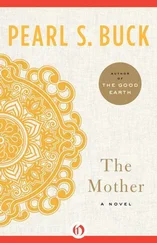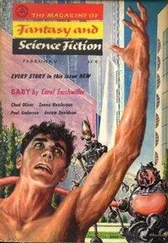It was she alone who conceived the possibility of rescuing Japanese-American orphans from institutions for the mentally retarded and placing them in normal homes. It was she, persevering against advice from those with greater experience, who modified adoption practices. And it was she who supported the efforts of doctors, nurses and welfare experts who were striving to treat people with mental retardation more humanely and with greater insight into the causes and course of mental impairment. She wrote many fine books and won notable prizes, but her major humanitarian work was with children, some of them sadly stigmatized like her own daughter.
Texas Center for Writers
Austin, Texas
Introduction by Martha M. Jablow 1
THE CHILD WHO NEVER Grew was published first as an article in the Ladies Home Journal in May, 1950, and a year later in hardcover by The John Day Company.
Why would anyone care to read a four-decade old book about a mentally retarded child who was born in 1920? Why would a publisher reissue such a book? Even with a Pulitzer and Nobel prize-winning author, a foreword by James Michener, and an attractive new cover, surely a book written more than forty years ago must be outdated.
“Outdated” and “Pearl Buck” do not belong in the same sentence. Pearl Buck was a woman well ahead of her time — on issues of civil rights, feminism, mental retardation, and children’s rights. Yet it is true that some parts of The Child Who Never Grew are no longer appropriate or accurate. Since 1950, advances in medicine, education, and law have improved opportunities for people with mental retardation. But the end of this short book addresses the pros and cons of public and private custodial institutions. Many of those huge state institutions which have “an immense advantage in that they are permanent, and once a child enters he is secure for life,” as Ms. Buck wrote then, are now closed or closing. The children who were placed there decades ago are adults today living in small group homes scattered throughout their communities. Many of them are holding jobs, voting, and paying taxes.
The few outdated references in this book are far overshadowed by Pearl Buck’s moving portrayal of parents’ conflicting emotions as they come to terms with a child’s limitations. When she writes from her heart about her personal pain and struggle with her daughter Carol’s condition, her voice is universal. She speaks to all parents who have traveled the same road — or who are just embarking on that journey as they discover that their child has some form of developmental delay.
Woodbine House’s decision to reissue The Child Who Never Grew is based on the book’s double value: it is not only supportive to parents in a heartfelt way, but it is also a landmark in the literature about disabilities (a field in which Woodbine House has published several dozen books).
When she wrote The Child Who Never Grew in 1950, Pearl Buck was the first prominent person to acknowledge publicly a child with mental retardation. Until then, many families “put the child away” in a caretaking institution, told friends and neighbors that the child had died, and tried to forget that the child existed. Other families quietly kept the child at home, indoors for most of the day, with only limited and chaperoned contact with the outside world.
Because its causes were not well understood at the time, mental retardation also carried a shameful stigma — a disgrace that was usually shrouded in secrecy, shame, and taboo. Part of the stigma was an erroneous belief that the cause was somehow the family’s fault. But by the mid-point of the twentieth century, medical science could shed a glimmer of light to correct some of the misunderstanding. As Ms. Buck wrote, “…the majority are retarded from non-inherited causes. The old stigma of ‘something in the family’ is all too often unjust.”
For families whose lives were haunted by the sad mystery of mental retardation, all the scientific explanations in the world would not have as much impact as a famous, respected person disclosing publicly, “I speak as one who knows.” In the 1990s’ tell-all atmosphere of celebrities baring their most private scars, it may be difficult to appreciate how much courage it took for Pearl Buck to speak out in 1950. But it was a painfully courageous act at that time.
Pearl Buck is the only American woman to receive both the Pulitzer and the Nobel prizes. (The Pulitzer in 1932 for The Good Earth and the Nobel prize for literature in 1938.) When a woman of such prestige and achievement “went public” about having a mentally retarded child, the floodgates burst open. She received mailbags of letters from readers whose lives, like hers, had been affected by mental retardation. Some readers even showed up on her doorstep to meet her personally, and she patiently took time to talk with them.
Pearl Buck’s lifting the curtain about Carol certainly did not erase entirely the stigma of mental retardation, but it was a watershed. And for that reason, it needs to be placed in historical perspective.
Mental retardation has always been with us. In prehistoric times, people believed that a mental disability was caused by evil spirits — to be driven out by magical rites or potions. The ancient Greeks interpreted it as a punishment from the gods. In some cases, prayer and sacrifices were offered as attempted cure. In other instances, mentally retarded persons were killed or abandoned to die. The Romans regarded them as fools. By the Middle Ages, when belief in witchcraft was rampant in Europe, retarded people were thought to be witches and were tortured, burned, killed, or imprisoned. Some were treated as clowns or jesters, useful only for a hearty laugh.
The Age of Reason (1600s and 1700s) began, to sow some seeds of enlightenment about how children learn, which would eventually lead to an understanding of how disabled children also can learn. The groundwork was laid by Jean-Jacques Rousseau, who proposed that children’s senses could be used as concrete tools to teach skills. In 1800, a young Parisian physician named Jean-Marc-Gaspard Itard studied Victor, “the wild boy of Aveyron.” Thought to be about twelve years old when he was discovered naked and living alone in the woods, Victor had no spoken language. He had apparently been left to die in infancy, his throat partly cut. Itard, who was to become known as the father of child psychology, poked, prodded, and challenged Victor in an attempt to jolt him from his savage state into civilization. Using a metal alphabet, Itard taught Victor to spell the French word for milk, as he drank a glass of lait. Victor never learned to speak, but he learned both to recognize and spell certain words. If Itard showed him a flashcard with the word chaussure, Victor could find a particular shoe. Victor also learned to read and write verbs and adjectives to communicate in brief sentences. Itard’s great achievement was showing that a “defective” child could indeed concentrate and learn. He had potential. He was not an idiot. But Itard’s work with Victor was clearly an exception in his time. For the most part, European society placed people who were mentally retarded, deaf, insane, or epileptic with criminals in asylums.
Edouard Seguin, a student of Itard, took the investigation of Victor and human communication a bit further. Seguin contended that mental deficiency was a pedagogical rather then a medical problem. He developed a series of exercises to help a retarded child’s motor development. And only a few decades after Victor was discovered, kindergartens sprang up in Germany, based on Friedrich Froebel’s belief that very young children could blossom like flowers if schools offered educational toys as intellectual stimulation. While Seguin and Froebel’s advances did not pertain specifically to children with mental delays, their insights eventually would prove applicable.
Читать дальше












